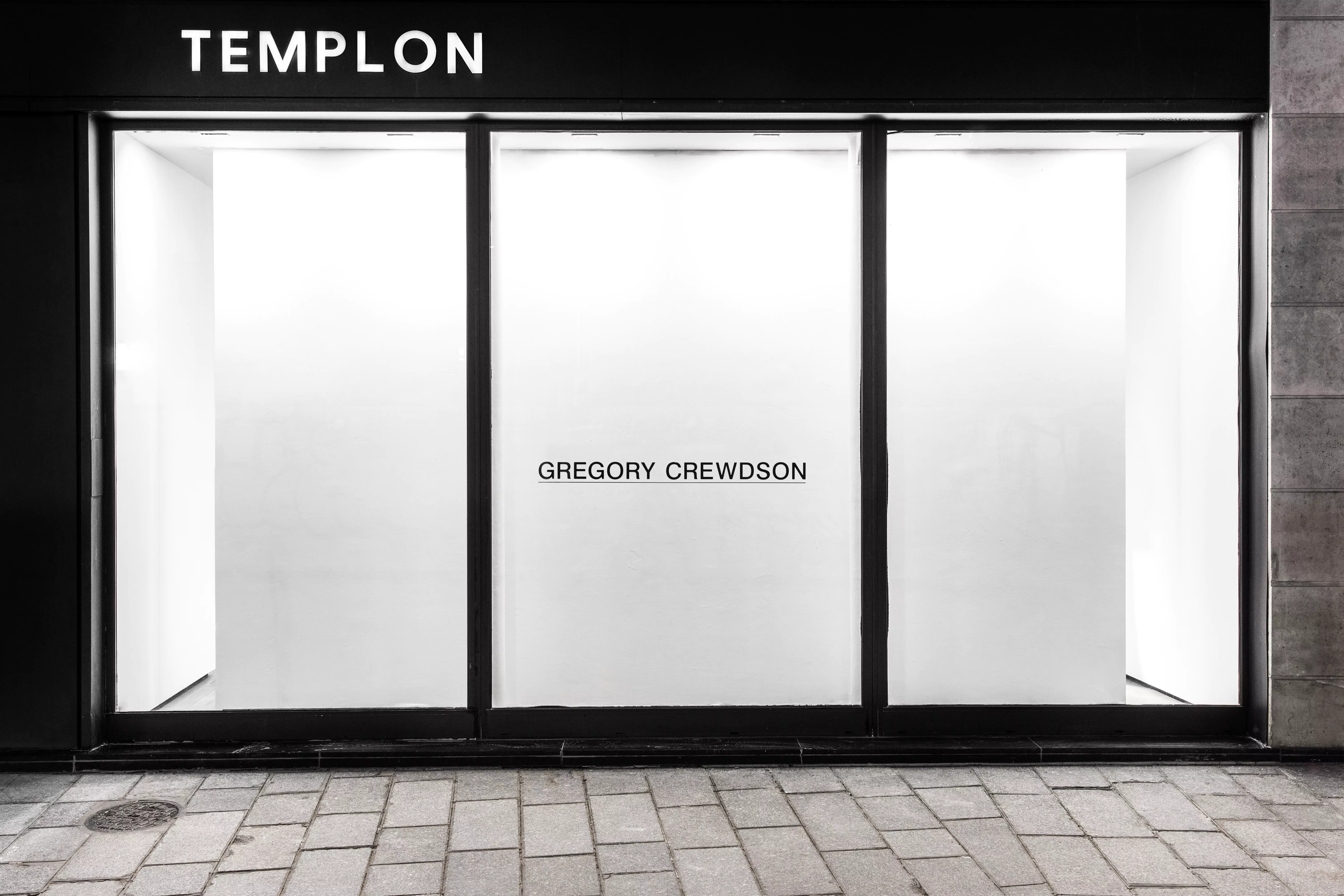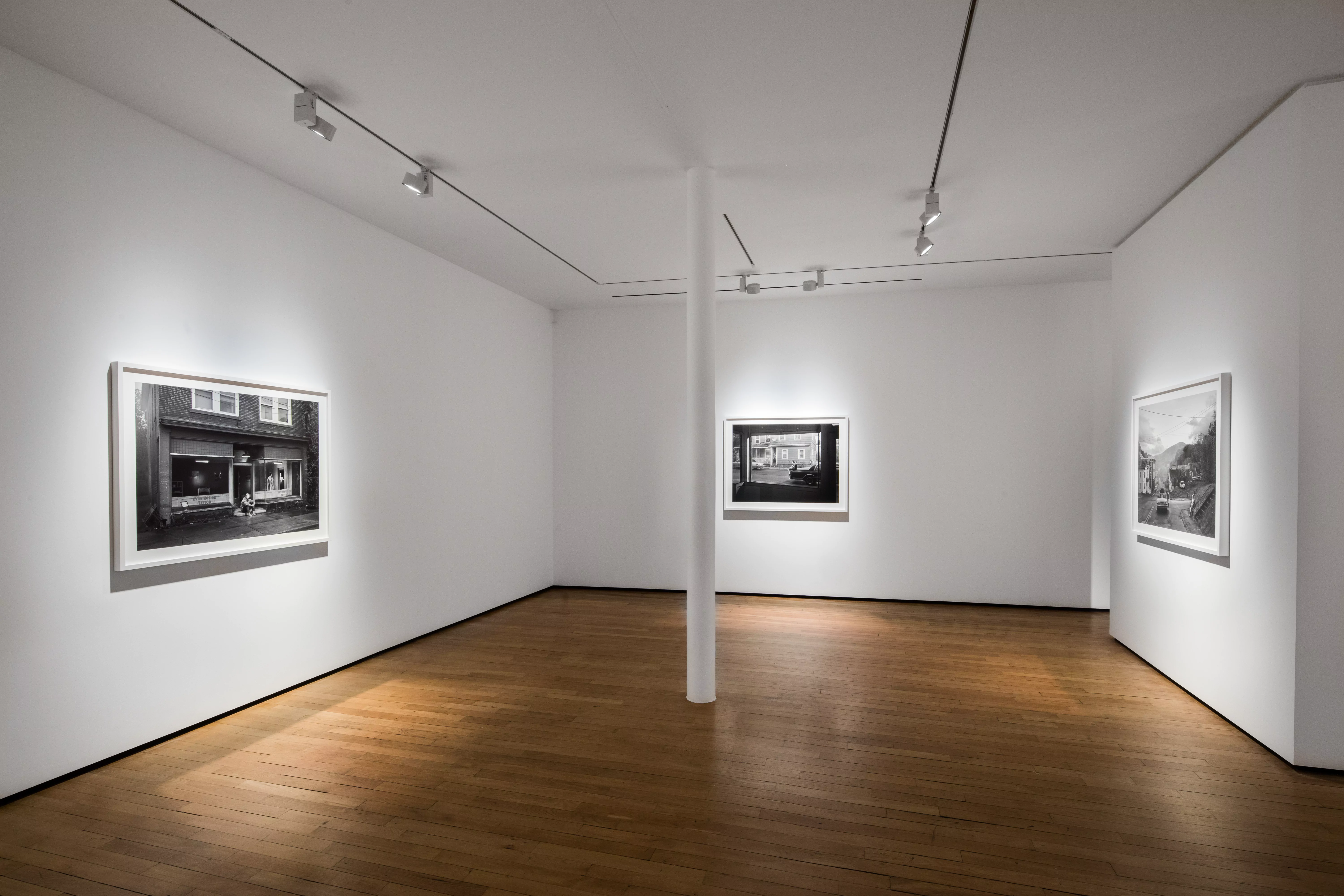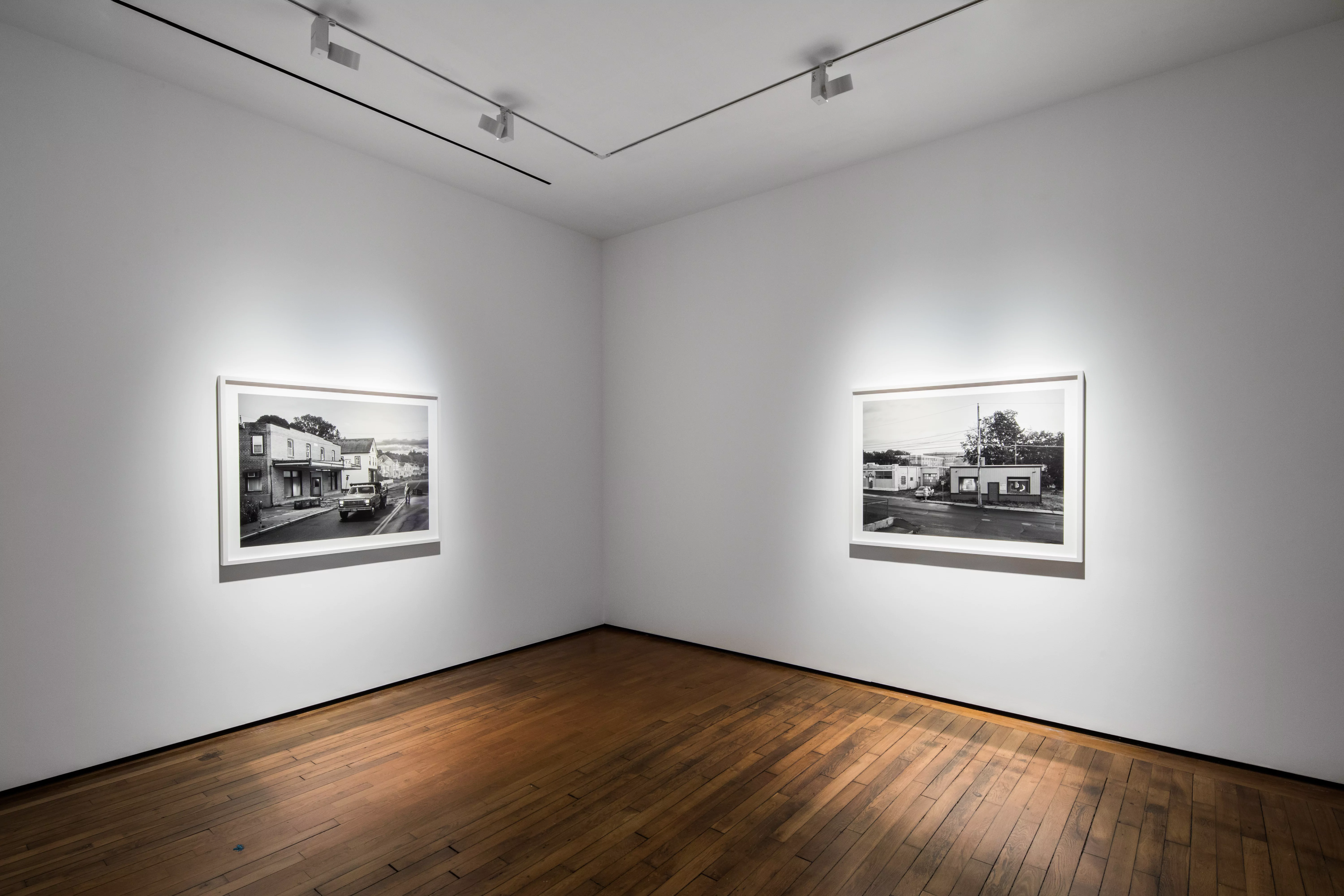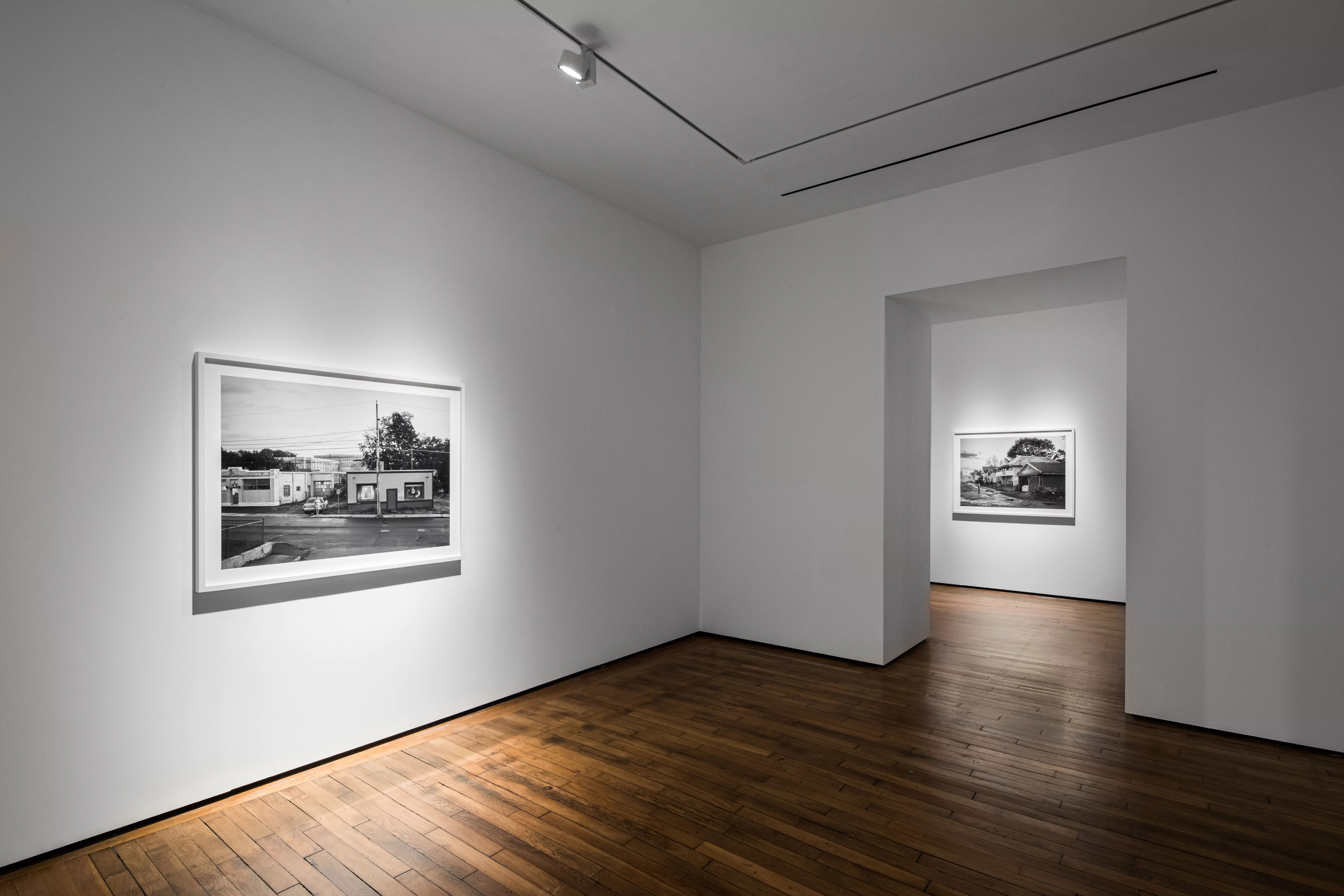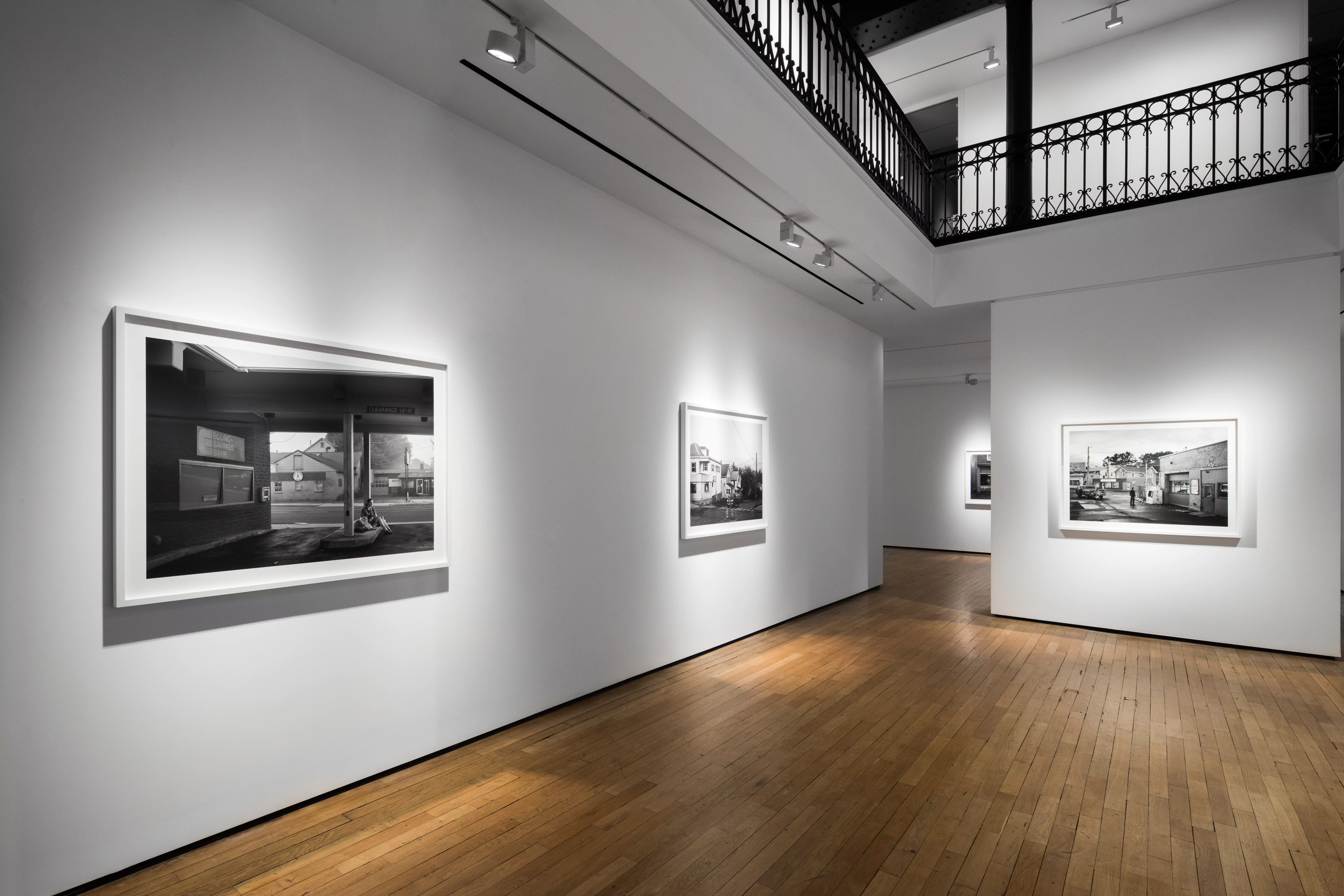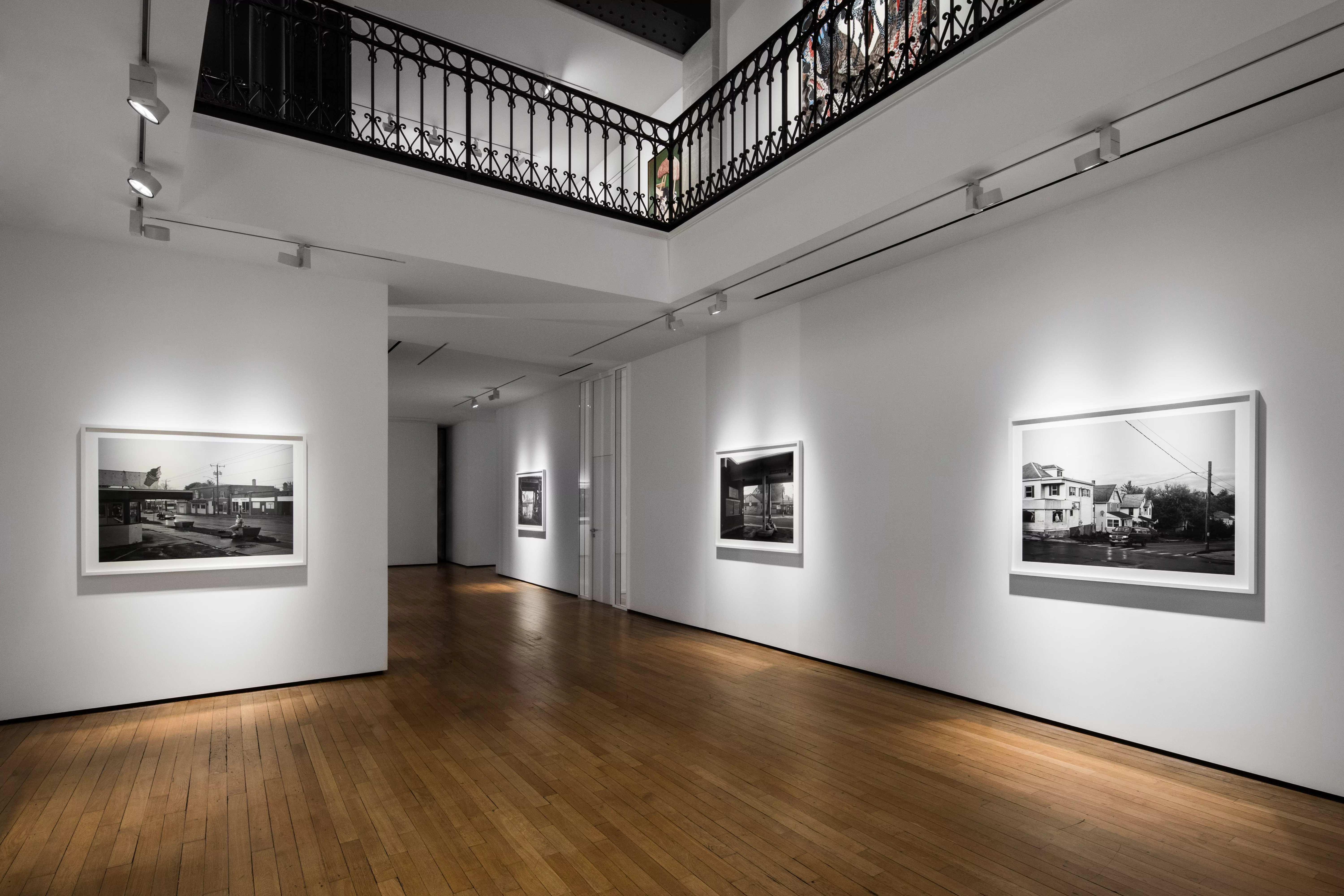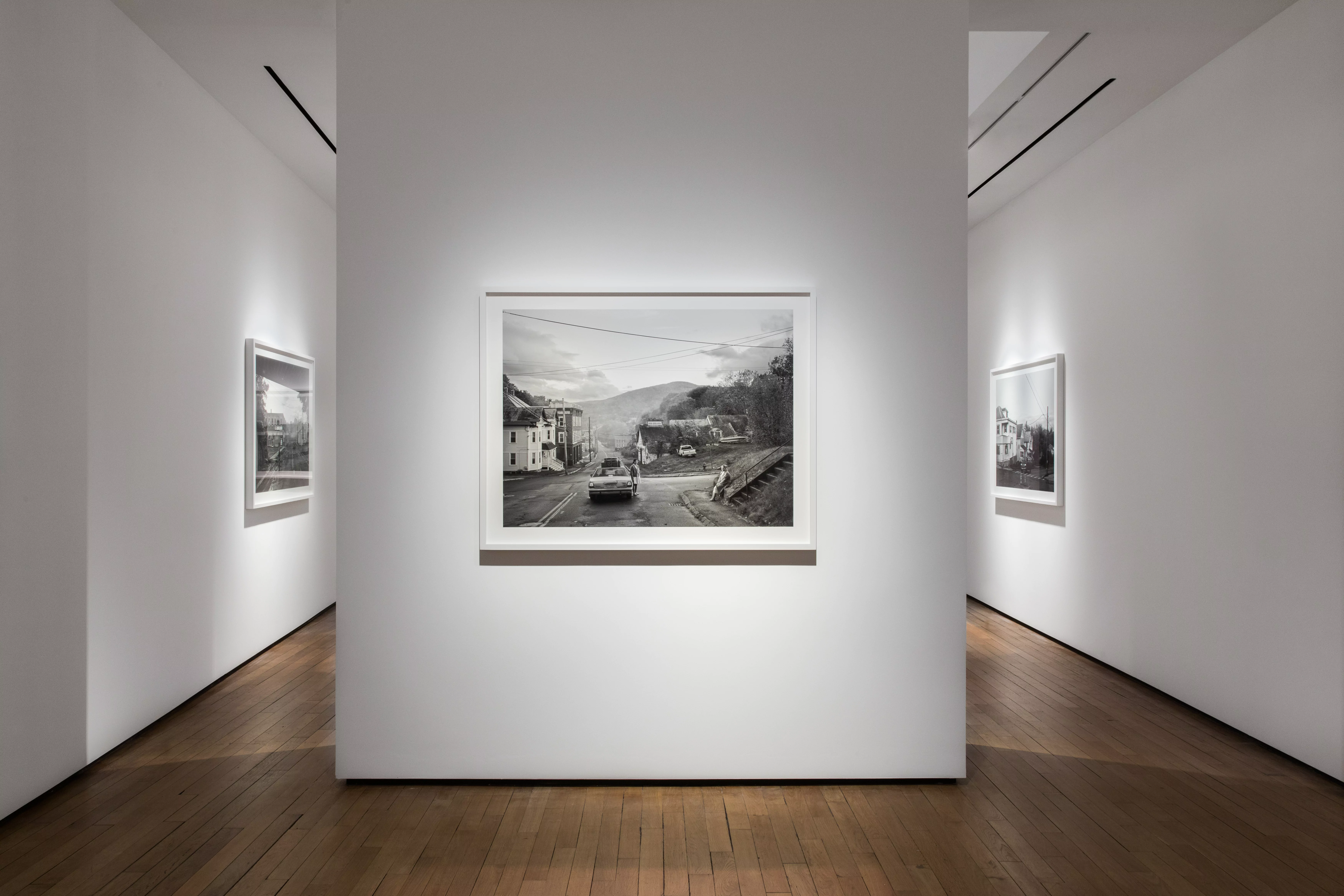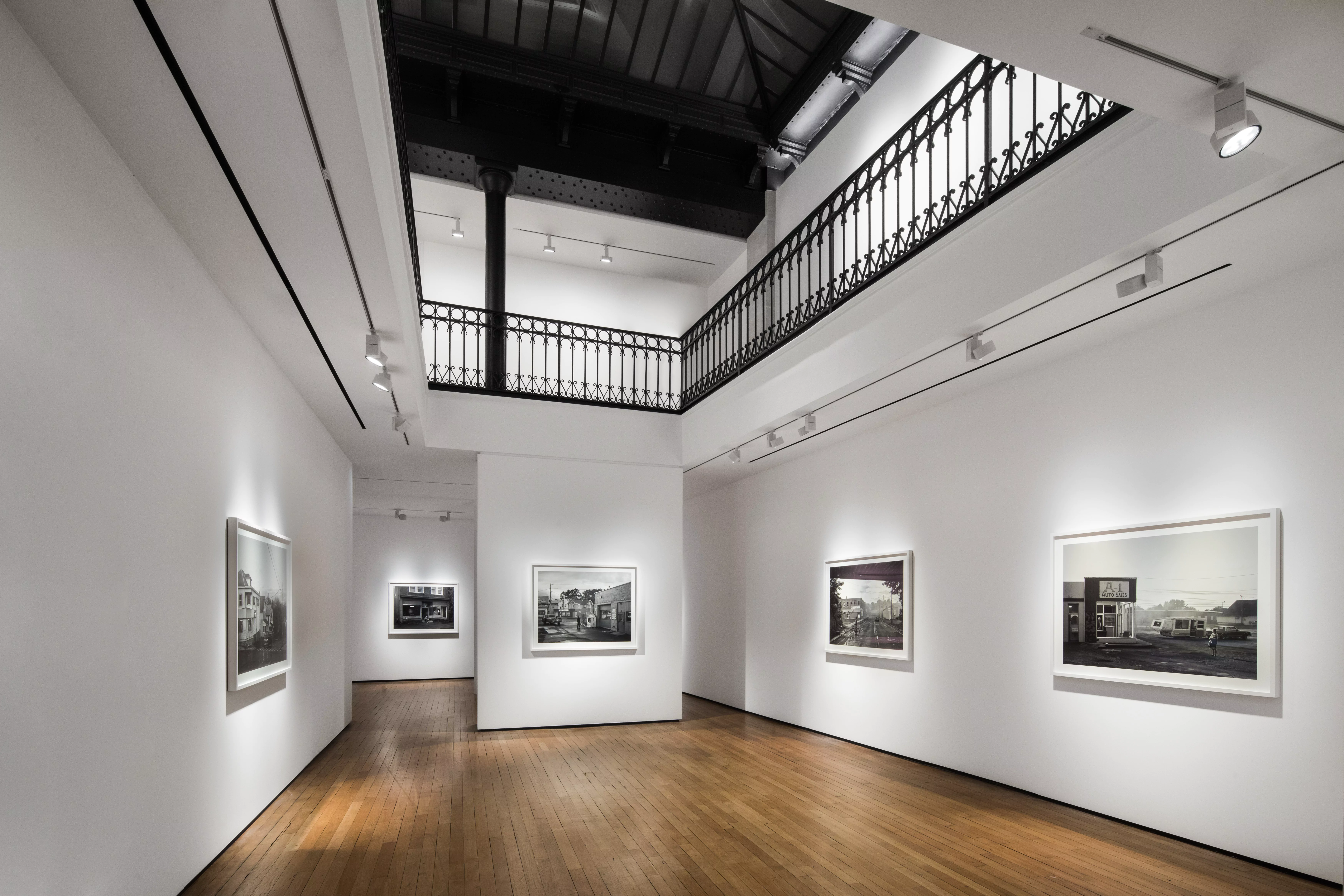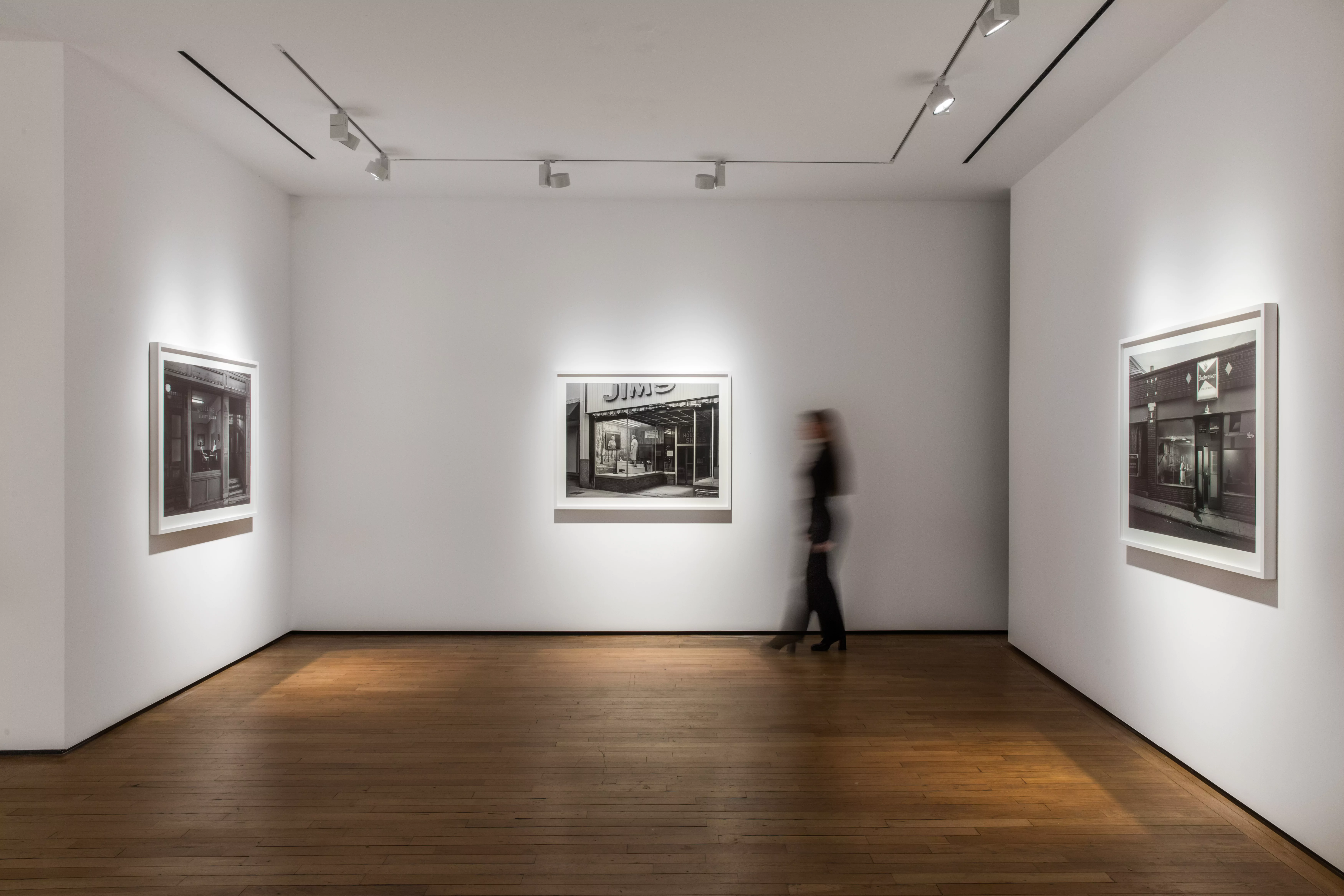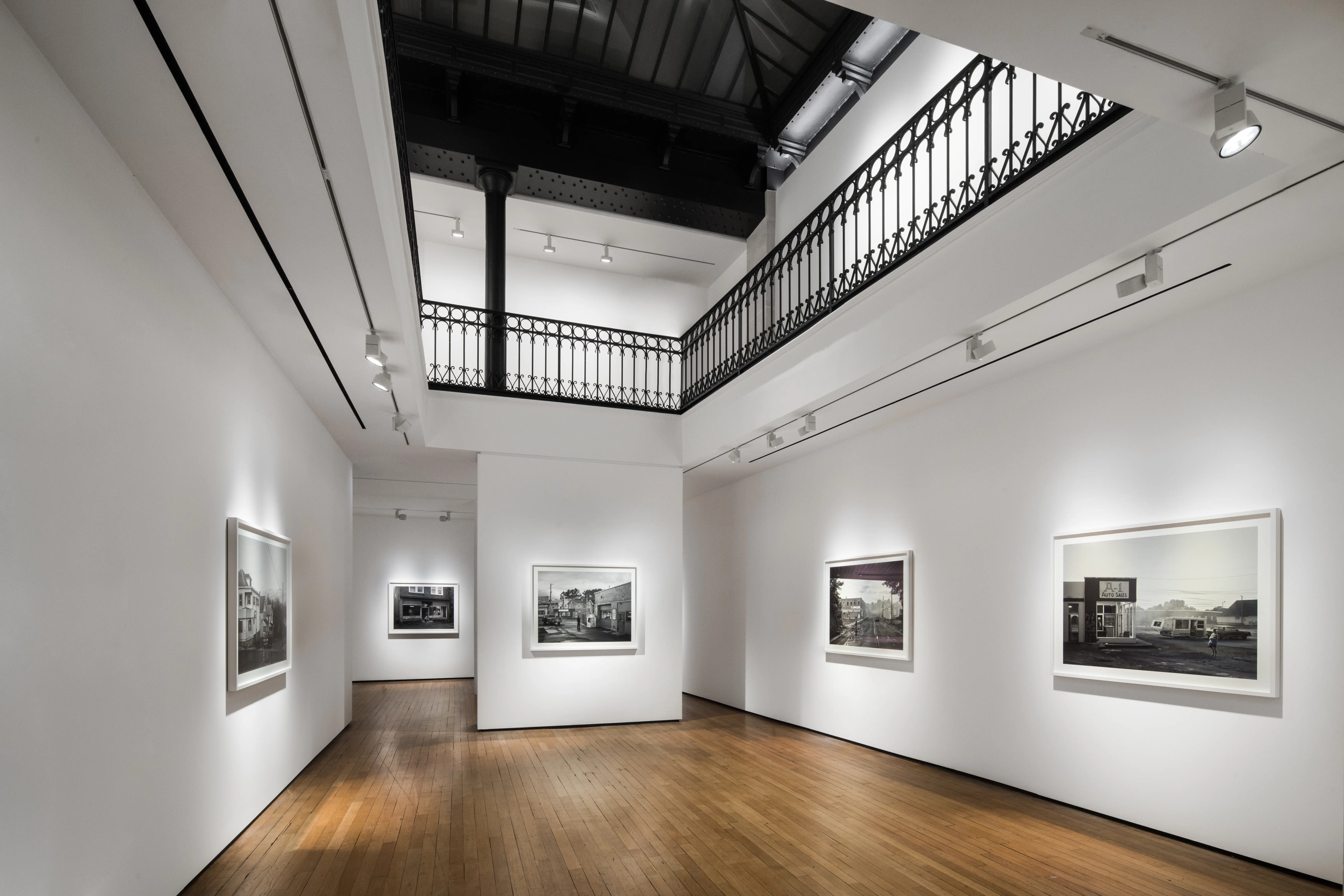
Gregory Crewdson
Eveningside
American artist Gregory Crewdson is unveiling his latest work in Paris this autumn with Eveningside, a series of black-and-white pieces created between 2021 and 2022. This final instalment in a trilogy he has been working on since 2012 features twenty panoramic photographs characterised by their disturbing clarity and twilight mood.
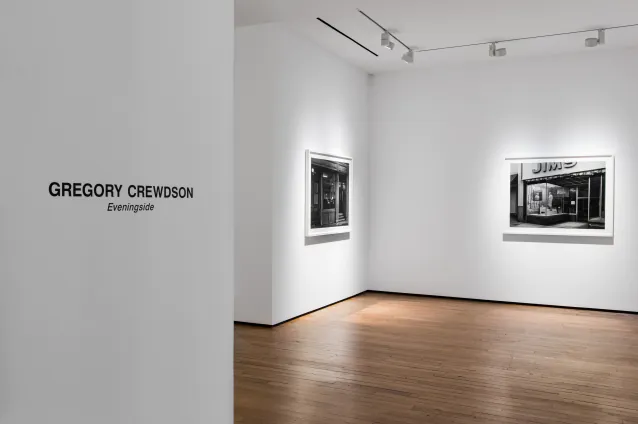
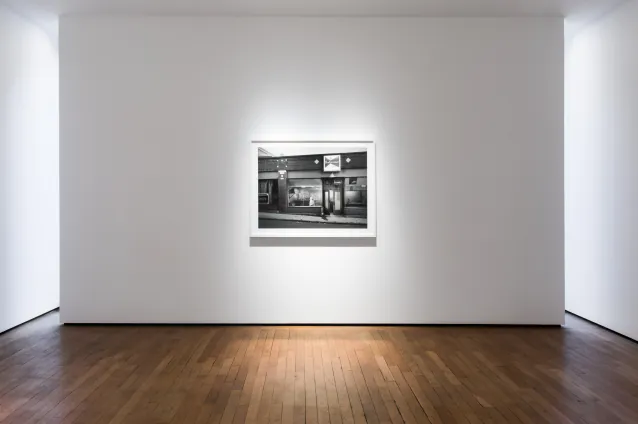
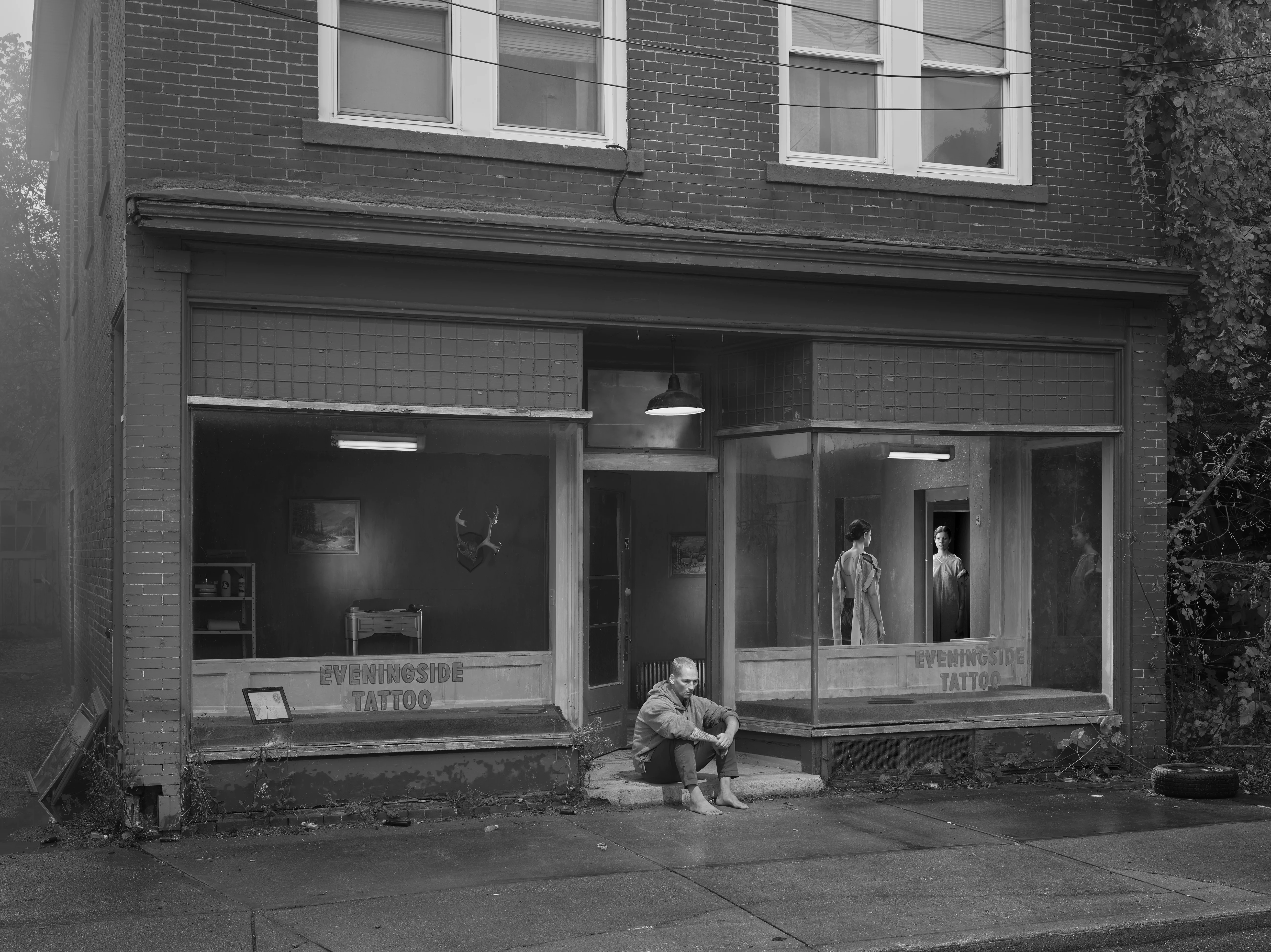
A pioneer of large-scale photography, Gregory Crewdson has been developing a unique photographic language over the last thirty years. Each shot is the result of a lengthy pre-production process involving storyboards, actors, set building, technicians, special effects and sophisticated lighting.
The Eveningside exhibition was held this summer as part of a retrospective at the Arles Rencontres de la Photographie event. Gregory Crewdson uses it to push the boundary between reality and fiction even further. He invents ambiguous suburban landscapes where the motionlessness of the characters, frozen in the most ordinary of daily activities, is both fascinating and disquieting.
A fictional portrait of an America in an unidentifiable era, the scenes depict solitary figures, often captured through a complex interplay of mirrors, storefronts or places of transition: bridges, porches, mini-markets and hardware stores. His black-and-white palette draws skilfully on a series of special effects – fog, smoke and rain – to create atmospheres as melancholy as they are gothic, bringing to mind classical cinema, film noir and the realism of Edward Hopper’s paintings.
Gregory Crewdson’s work oscillates between the vulnerability of the human condition and the paradoxes of the American dream. The complexity of the monochrome tones and their strange beauty offer a powerful metaphor for the unendurable limits of our hyper-connected world, digital and blinded. Crewdson is never didactic, leaving the viewer free to imagine the stories hidden beneath the surface and dream of other possibilities.
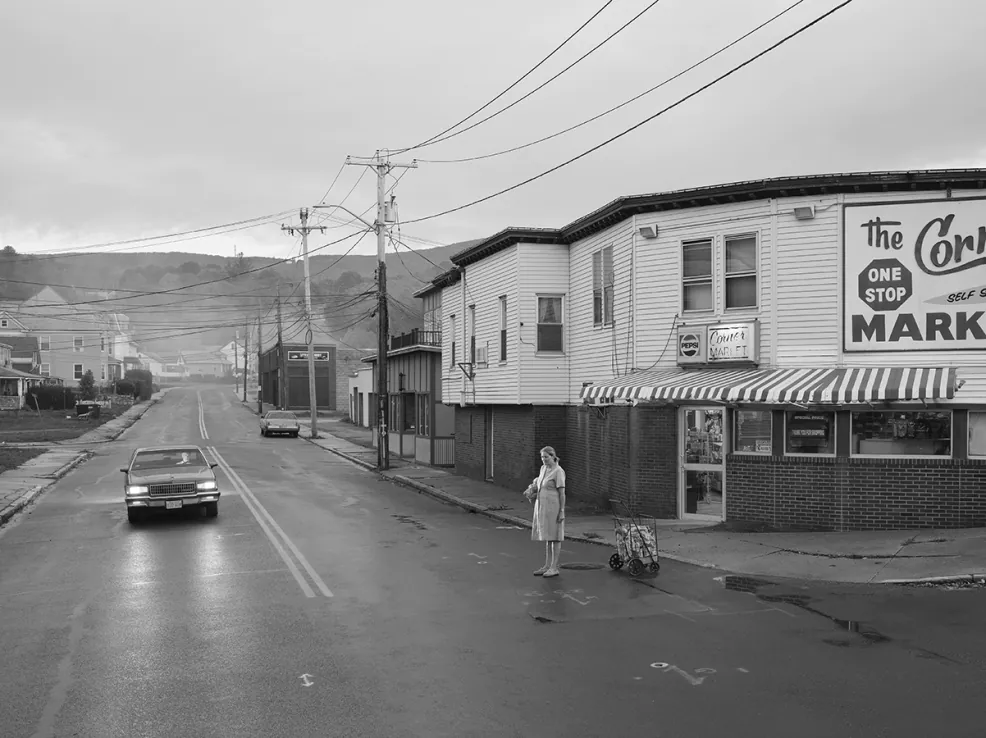
The Corner Market, 2021-2022
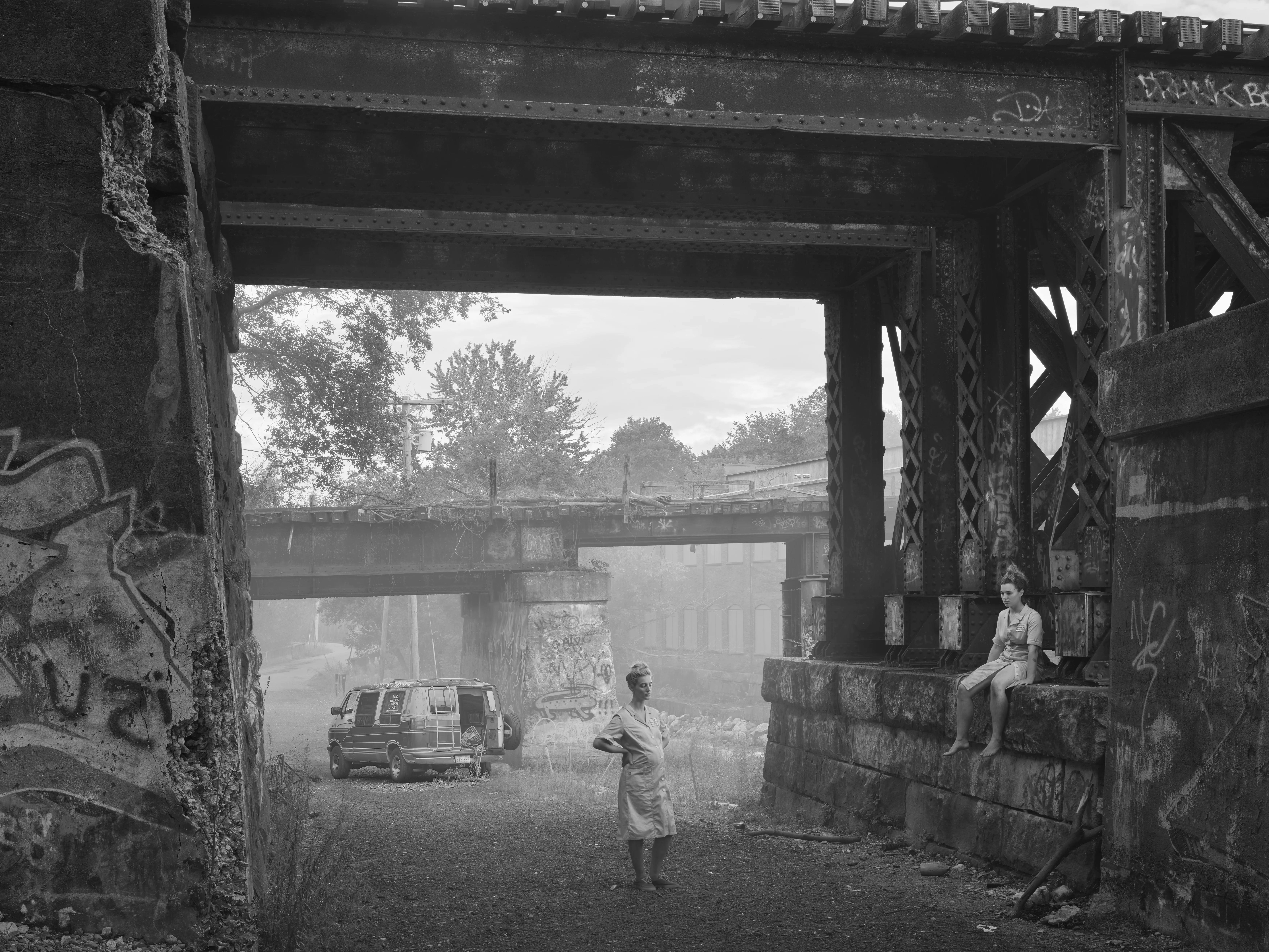
The artist
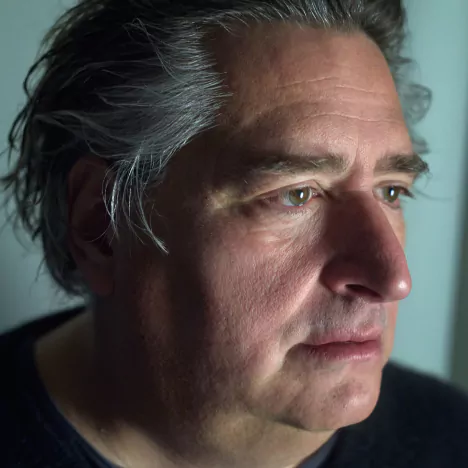
Born in 1962 in Brooklyn, Gregory Crewdson lives and works in New York. A leading figure in American photography, he stages his photographs like films, using actors, sets, props people, storyboards and make-up artists. In this way, he addresses the dark side of the American dream as well as his own psychological issues. He believes that only photography always remains silent. There is no before and no after. The events it captures do not unveil their mystery.
